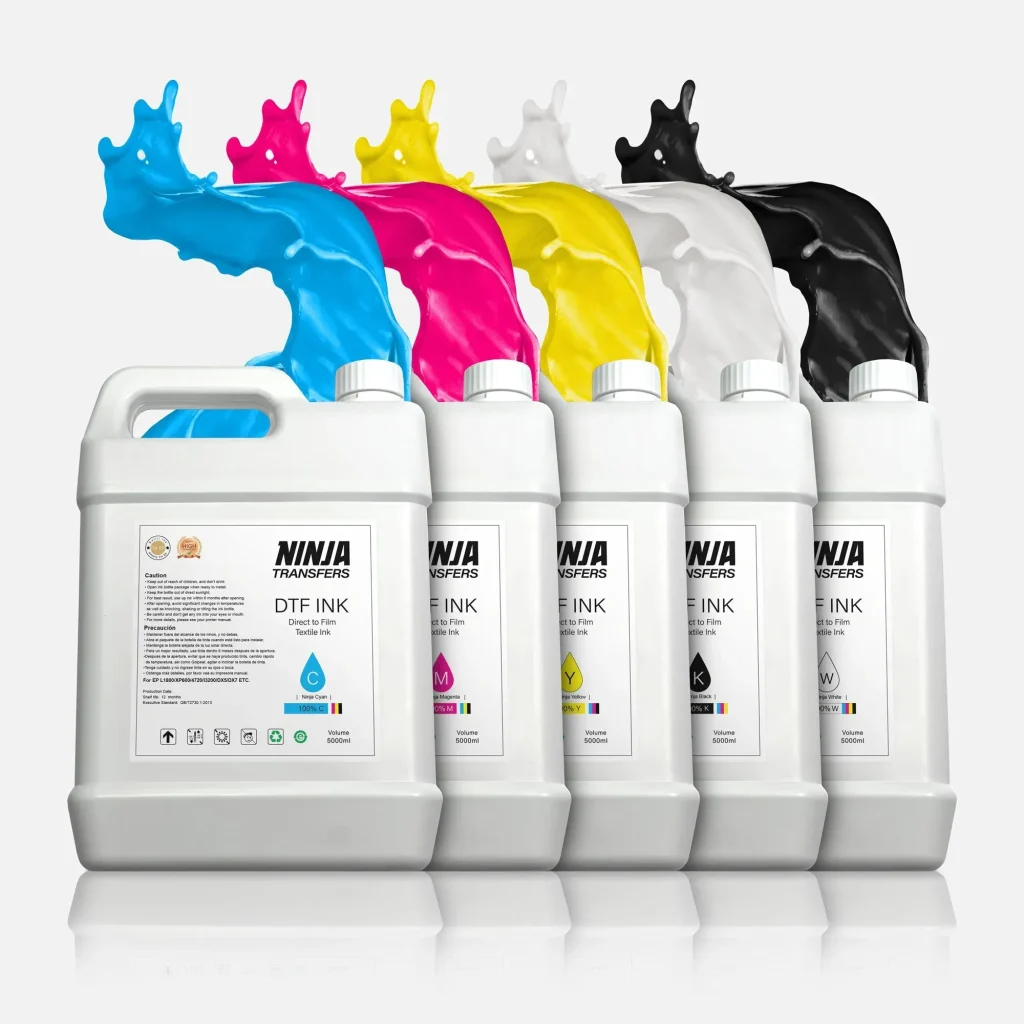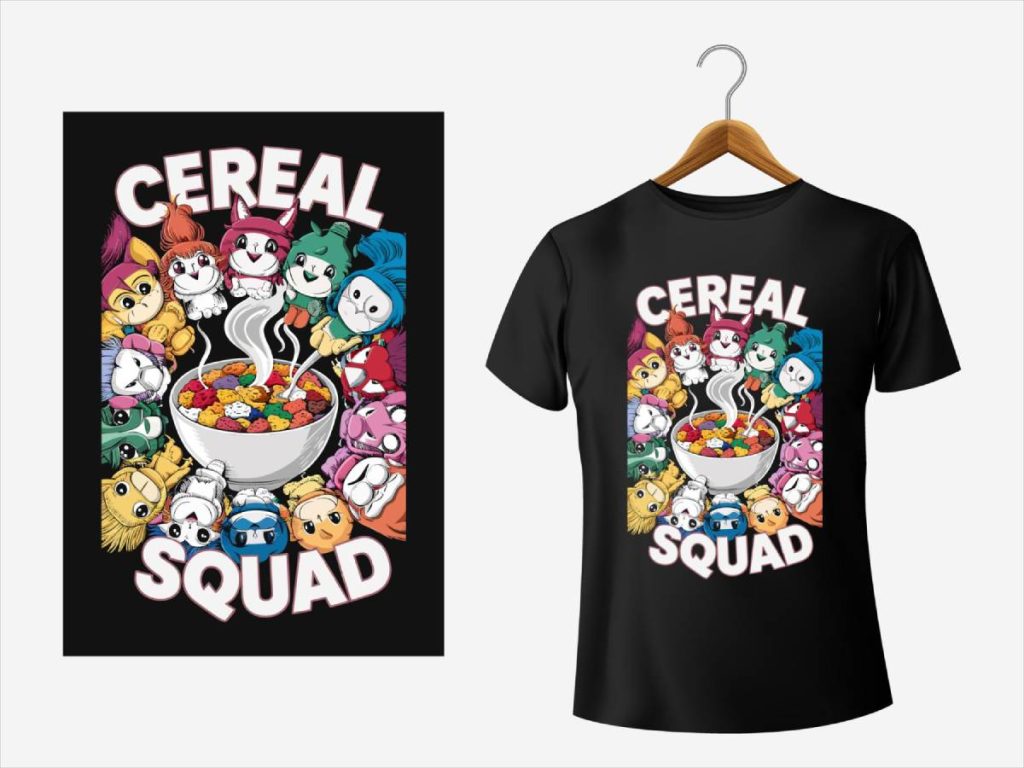DTF inks, or Direct-to-Film inks, are revolutionizing the world of fabric printing by providing exceptional quality and durability in designs. This innovative technology not only supports vibrant colors but also ensures that printed fabrics can withstand the test of time, making it a top choice for designers and printers alike. As we delve deeper into DTF printing, it is crucial to understand the various types of DTF inks available and the factors to consider when choosing the best option for your projects. From polymer-based inks that offer flexibility to eco-friendly water-based alternatives, the selection process can significantly affect print results and longevity. By exploring DTF ink durability and the latest advancements in the field, you’re well on your way to achieving stunning, high-quality prints that delight your customers.
Entering the realm of Direct-to-Film inks reveals a dynamic alternative in the apparel printing industry. This unique approach allows for intricate designs to be seamlessly applied to various materials, resulting in a product that not only looks fabulous but also stands up robustly to daily wear. Understanding these specialized inks aids in selecting the right type for different fabrics and applications, which is essential for achieving outstanding results. Eco-conscious manufacturers are increasingly focusing on creating sustainable, environmentally friendly options that cater to the growing demand for green printing. As we explore this exciting topic, we will unveil the many facets of selecting DTF inks that combine quality, durability, and environmental responsibility.
Understanding the Basics of DTF Printing
Direct-to-Film (DTF) printing is a revolutionary advancement in the garment decoration industry, allowing for a seamless transition from digital design to high-quality printed products. This process utilizes specialized inks that bond exceptionally well to various fabric types, including natural fibers such as cotton and synthetics like polyester. As the technology behind DTF printing continues to develop, it has quickly established itself as a preferred option for custom apparel due to its ability to produce vibrant colors and intricate detail, catering to both small and large scale printing operations.
One of the major advantages of DTF printing is its efficiency. The process allows for quicker setup times and is perfect for short runs, making it ideal for small businesses or artists looking to personalize their merchandise. Moreover, because DTF printing uses a film transfer method, it minimizes waste and enables multiple color layers to be printed simultaneously. This not only enhances productivity but also opens up creative possibilities for designers looking to expand their art onto textiles.
Exploring Different Types of DTF Inks
When delving into the world of DTF inks, it becomes clear that the choice of ink plays a crucial role in determining the final output quality, durability, and overall cost-effectiveness. The most common types include polymer-based inks, water-based inks, and pigment inks. Polymer-based inks are favored for their vibrant colors and exceptional adhesion properties, which make them suitable for a wide range of fabrics. Their flexibility ensures that prints maintain clarity and strength, thereby withstanding rigorous washing cycles.
Conversely, water-based inks have gained traction due to their eco-friendly nature. They are made with organic compounds that reduce environmental impact, appealing to sustainable brands and consumer preferences. While they produce a softer feel, they might lack the vibrancy seen in polymer-based inks. Pigment inks, on the other hand, are strongly recommended for outdoor applications due to their remarkable UV resistance and durability. Understanding these nuances can help businesses make informed choices that align with their printing objectives.
Key Factors in Choosing DTF Inks
Selecting the appropriate DTF ink is a fundamental step that significantly impacts the overall success of your printing projects. One of the primary factors to consider is fabric compatibility; different inks demonstrate varied performance levels on diverse material types. For example, while some inks are tailored for natural fibers, others are engineered to work best on synthetic blends. This direct correlation between ink type and fabric choice ensures that the prints adhere well and exhibit the desired aesthetic.
In addition to fabric type, application methods also influence ink selection. Different printers and techniques may require adjustments in ink viscosity, drying times, and curing temperatures. Adhering to these parameters is essential for achieving optimal adhesion and color quality. Furthermore, assessing the durability needs—such as fade-resistance and print longevity—can also dictate the choice of DTF ink. Higher-end inks tend to offer superior performance, ensuring your prints remain vibrant and intact over time.
Durability of DTF Inks: What You Need to Know
Durability is arguably one of the most critical considerations in DTF printing, especially for items subject to regular wear and washing. The performance of DTF inks is directly tied to their formulation and the curing processes used during application. Polymer-based inks, for example, are recognized for their exceptional resistance to fading and cracking, making them particularly suitable for high-traffic apparel like t-shirts, hoodies, and sportswear.
Moreover, printing quality is enhanced when the curing process is executed correctly. Improper curing can lead to premature print deterioration, affecting adhesion and longevity. As such, continual advancements in ink technology have resulted in formulations that provide better adhesion and flexibility while still allowing the fabric to maintain its original softness. This balance ensures that prints will last through many washes without sacrificing comfort and wearability.
The Rise of Eco-Friendly DTF Inks
In an age where sustainability is paramount, the printing industry is witnessing a significant shift towards eco-friendly solutions, including DTF inks. The emergence of water-based DTF inks is a testament to this movement, offering an alternative that minimizes environmental impact while still meeting consumer demands for high-quality prints. These inks are made without harmful solvents and are biodegradable, making them an appealing choice for environmentally conscious businesses.
Furthermore, advancements in eco-friendly manufacturing practices have paved the way for inks that not only perform well but also prioritize reducing carbon footprints. Many companies are actively seeking DTF inks that comply with strict environmental standards and certifications, reflecting a growing consumer trend towards sustainability. By integrating eco-friendly inks into their production lines, businesses not only appeal to a wider audience but also contribute to protecting the planet.
Best Practices for Optimal DTF Printing Results
To maximize the potential of DTF printing, it’s crucial to adopt a set of best practices that ensure high-quality outputs. First and foremost, conducting thorough fabric tests before initiating a larger production run can help identify any compatibility issues with the chosen DTF inks. This proactive approach means avoiding costly errors and guarantees that the final product meets the expected quality standards.
Additionally, understanding and implementing the right printing and curing techniques can greatly influence ink performance. Adhering to recommended temperature and time settings ensures that the DTF inks adhere properly, achieving the vibrant and durable results desired. Regular equipment maintenance is also vital, as this prevents complications associated with print quality and ensures consistent results across production.
Frequently Asked Questions
What are DTF inks and how do they work in DTF printing?
DTF inks, or Direct-to-Film inks, are specialized inks used in a unique printing process where designs are printed onto a special film. This film is then transferred onto fabric using heat, resulting in vibrant and durable prints that adhere well to various materials such as cotton and polyester.
What types of DTF inks are available for different printing needs?
There are three primary types of DTF inks: 1) Polymer-based inks, known for their vibrant colors and excellent adhesion; 2) Water-based inks, which are eco-friendly but better suited for lighter fabrics; and 3) Pigment inks, which offer durability and UV resistance, ideal for outdoor apparel.
How do I choose the right DTF inks for my fabric?
When choosing DTF inks, consider fabric compatibility, as some inks are better suited for synthetic materials like polyester, while others excel on cotton. Additionally, think about the application method and the durability requirements of your print to ensure the best results.
What factors influence the durability of DTF ink prints?
The durability of DTF ink prints is influenced by the quality of inks used, print techniques, and the fabric type. Higher-quality DTF inks typically show better resistance to fading, peeling, and cracking, ensuring that prints remain vibrant even after multiple washes.
Are there eco-friendly DTF ink options available in the market?
Yes, there are eco-friendly DTF ink options, particularly water-based inks, which prioritize sustainability. Many manufacturers, like Epson, are developing inks that minimize environmental impact while still providing high-quality and vibrant prints.
What best practices should I follow for optimal results when using DTF inks?
To achieve optimal results with DTF inks, conduct fabric tests to identify the best ink performance, use correct printing and curing techniques, and maintain your printing equipment regularly to ensure high-quality and consistent results.
| Key Point | Description |
|---|---|
| What are DTF Inks? | DTF inks are used in a process where designs are printed on a special film and then transferred onto fabric using heat, providing colorful and durable prints across various materials. |
| Types of DTF Inks | 1. Polymer-Based: Excellent adhesion, vibrant colors, flexible, durable for washes. 2. Water-Based: Eco-friendly, softer print feel, best for lighter fabrics. 3. Pigment Inks: UV resistant, ideal for outdoor items, excellent wash-fastness. |
| Choosing the Right Ink | Consider fabric compatibility, application method, and durability concerns to select inks that yield the best results. |
| Recent Developments | The DTF ink market is evolving with innovations aimed at sustainability, such as eco-friendly formulations and enhanced color vibrancy. |
| Best Practices | Conduct fabric tests, ensure proper printing and curing techniques, and maintain equipment for optimal performance of DTF inks. |
Summary
DTF inks play a crucial role in the evolving landscape of the printing industry, particularly in apparel customization. This innovative ink type enhances the ability to produce high-quality, vibrant, and durable prints on various fabrics. By understanding the different types of DTF inks, including polymer-based, water-based, and pigment inks, users can make informed choices based on their specific needs. Furthermore, staying updated on recent advancements in DTF ink formulations can significantly elevate printing capabilities, allowing for excellent color vibrancy and environmental considerations. Following best practices when using DTF inks not only ensures optimal results but also contributes to a seamless and efficient printing process. As demand for quality and sustainability in prints grows, DTF inks are set to remain a preferred choice for those seeking to make a mark in the apparel industry.



